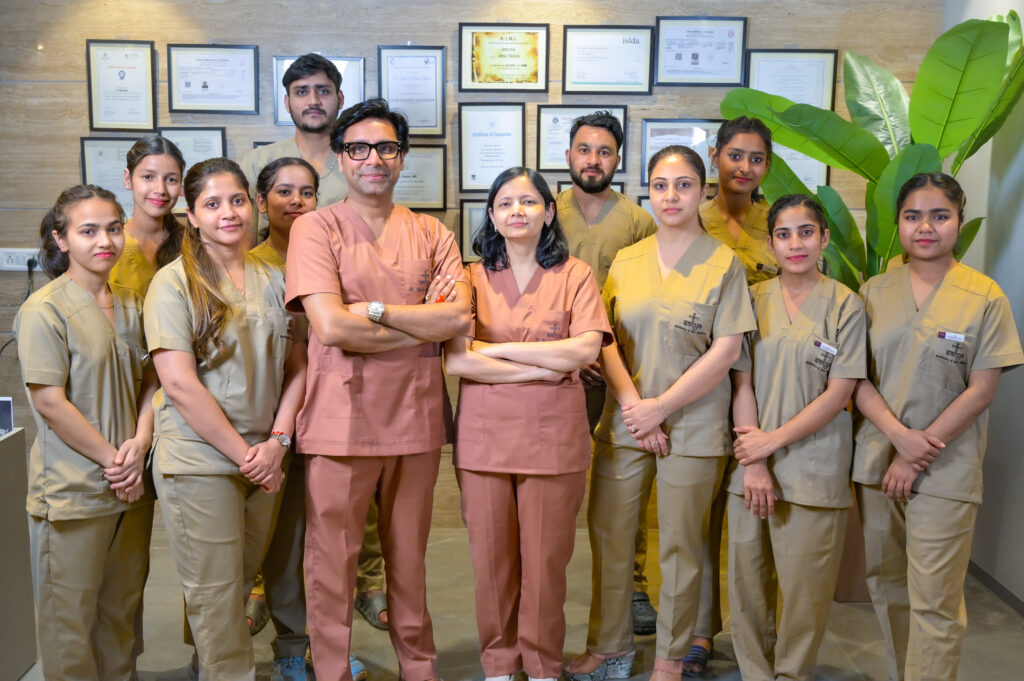
Why Celebrity Hair Transplants Often Fail: Lessons from Dr. Shaiil Gupta, MD
When celebrities like actors, cricketers, or musicians undergo hair transplants, their results often inspire common people to trust the clinics behind their procedures. However, the reality of these transplants is far from the glamorous image portrayed. Dr. Shail Gupta, Founder and Chief Hair Transplant Surgeon at Satya Skin & Hair Solutions, sheds light on why so many celebrity hair transplants fail and how patients can avoid falling into the same trap.
The Illusion of Celebrity Transplants
Many celebrity hair transplants fail within a year. Despite having access to the best surgeons, resources, and treatments worldwide, their results often don’t last. Why?
The Real Reasons Behind Celebrity Hair Transplant Failures


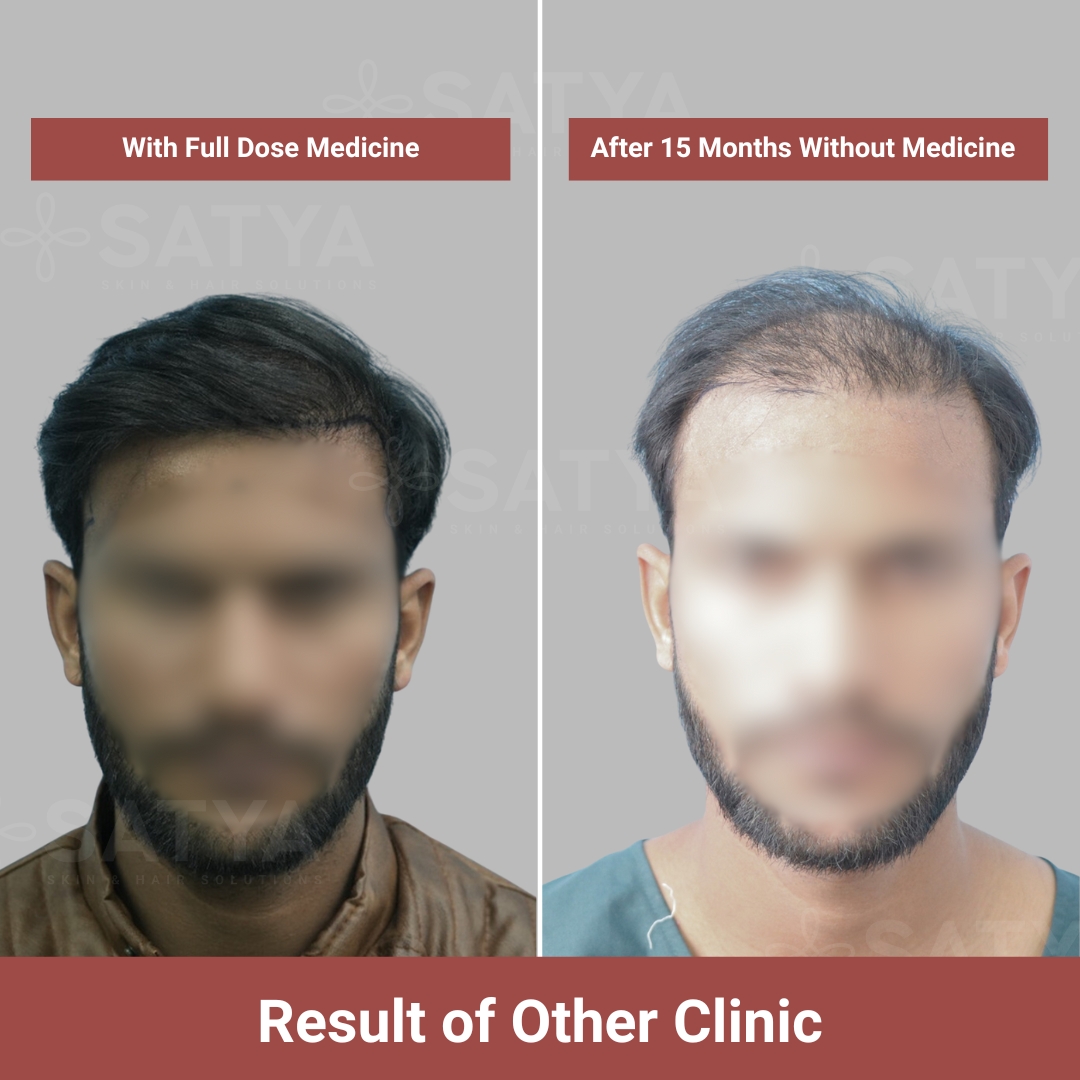
Medicine gone, Result gone!
- Over-Reliance on Medications:
- Most celebrity transplants are not “pure” transplants but a combination of 80% medication results and 20% transplant results.
- High doses of medication like finasteride initially make the results look spectacular but carry significant risks:
- Tolerance Development: Over time, medications lose their effectiveness.
- Increased Risks: Higher doses lead to potential side effects.
- Unethical Practices:
- Clinics often prioritize marketing over patient health, using celebrities as tools to generate referrals.
- Paid Endorsements: Celebrities are sometimes compensated for their “transplant results,” which are often propped up with heavy medication and cosmetic camouflage.
- Poor Planning:
- Extracting grafts from unsafe donor zones using only FUE techniques.
- Unnecessary lowering of hairlines.
- Overusing donor hair without considering future progressive thinning.
- Failing to educate the patient about the impact of stopping medications.

4. Camouflage Techniques:
- Many celebrity results rely on concealers, powders, and professional styling. Without these, the true quality of the transplant is revealed, often leaving much to be desired.
THE ILLUSION OF MEDICINES IN HAIR TRANSPLANT
No transplant done, result of only medicine



No transplant done, result of only medicine
Medicines can make a very ordinary hair transplant look great and can be a big cover-up for over over-promised number of grafts and an over-promised skill set from the surgeon. The effect medicine can have on the hair transplant in addition to preventing further thinning of hair are the following:-
Overall coverage: Re-growth of existing miniaturized hair, leading to coverage of bigger areas, even in the areas where no transplant is done. This would be counted as a hair transplant.
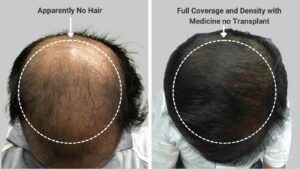
Hairline Aesthetics: Growing softer hair in the hairline zone can make even a very ugly hair transplant with gaps, look great.
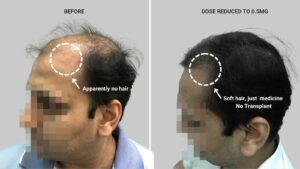
Better donor appearance: Medicines can make the donor hair thicker, so even a completely exhausted donor which is over-harvested by FUE will look better than its actual position but when the medicines are stopped or the medicine stops working on your head, you will see that the donor is devastated.
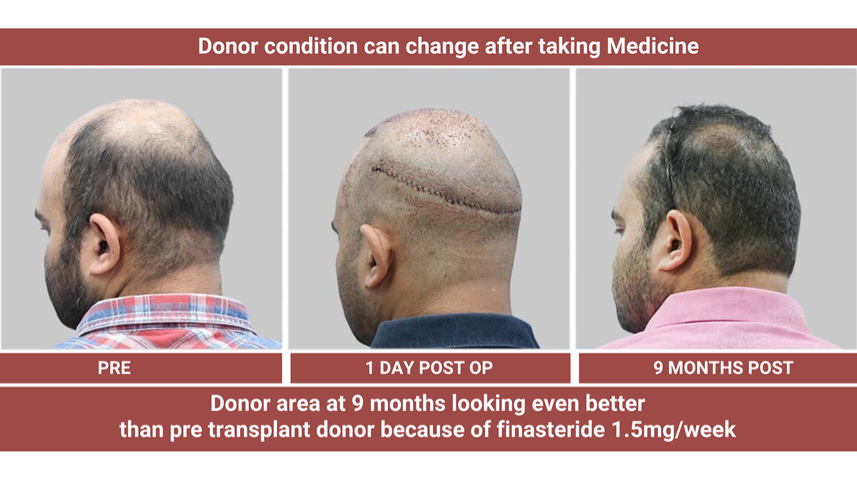
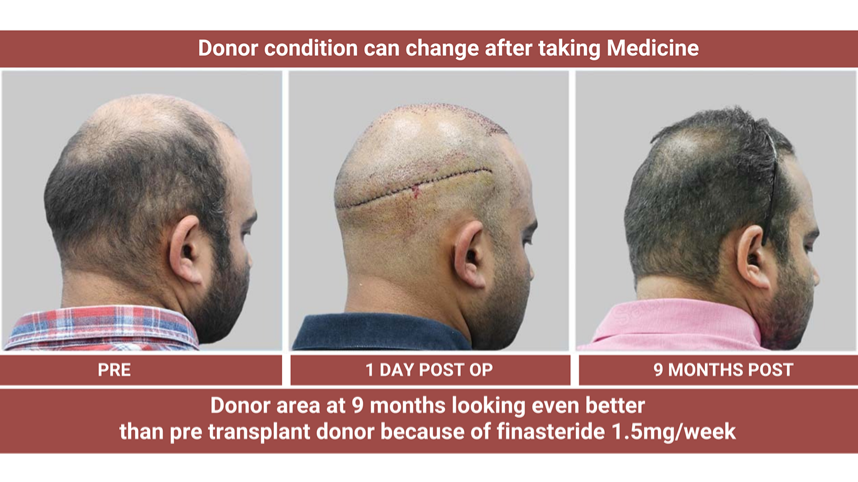
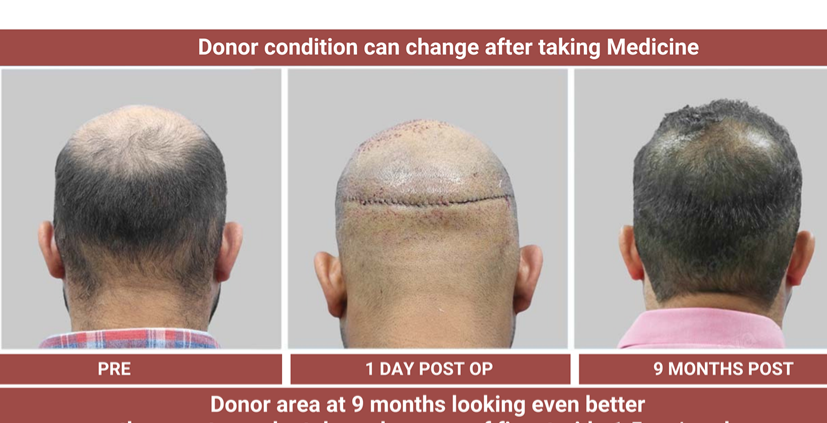
Free Hair & Free Credit: Hair growth by medicine is absolutely free home run for the doctor at the cost of the patient’s health. That is why not many doctors acknowledge the benefits of the medicine or always underplay it. They will just say that medicine is given to prevent further hair loss which is a complete lie.
The Endless Loop of Celebrity Transplants
Once the initial results fade:
- Celebrities often become victims themselves, needing repeated transplants or relying entirely on medications.
- The clinics move on to their next celebrity “ambassador,” repeating the cycle.
How to Avoid These Mistakes
Dr. Shaiil Gupta emphasizes that patients should focus on ethics, skill, and transparency over glamour and endorsements.
Key Takeaways for Patients
- Understand the Role of Medication:
- Results that rely heavily on medications are not sustainable.
- Consider micro-dosing options to minimize health risks and dependency.
- Choose Ethical Clinics:
- Avoid clinics that rely on endorsements or marketing gimmicks.
- Research clinics that prioritize your health, donor preservation, and long-term results.
- Plan for the Future:
- Your donor area is a limited resource. Make sure it is used judiciously to ensure results last as your hair loss progresses.
- Don’t Be Swayed by Short-Term Results:
- Transplants that look perfect in the first few months can fail within a year if not planned ethically.
Satya’s Ethical and Futuristic Approach
At Satya Skin & Hair Solutions, we have treated numerous patients who fell victim to poor planning and unethical practices. Our unique approaches have helped them achieve results that last.
CXarousel of patient
Why our results last long
Satya’s MIN-MED Approach™
- Minimal Medication Dependence: Starting with the lowest effective dose to minimize risks.
- Long-Lasting Results: Focusing on the right balance of grafts and medications.
- Effective Tolerance Management: Adjusting medications safely to ensure sustained outcomes.
Advantages of Satya’s Ethical Hair Transplant™
- Donor Preservation: Protect your donor area for future use as even transplanted hair can thin over time.
- Cost and Time Efficiency: No unnecessary PRP sessions or excessive medications, saving your time, money, and hair.
- Sustainable Results: Balanced hair transplants that last long, with minimal health risks.
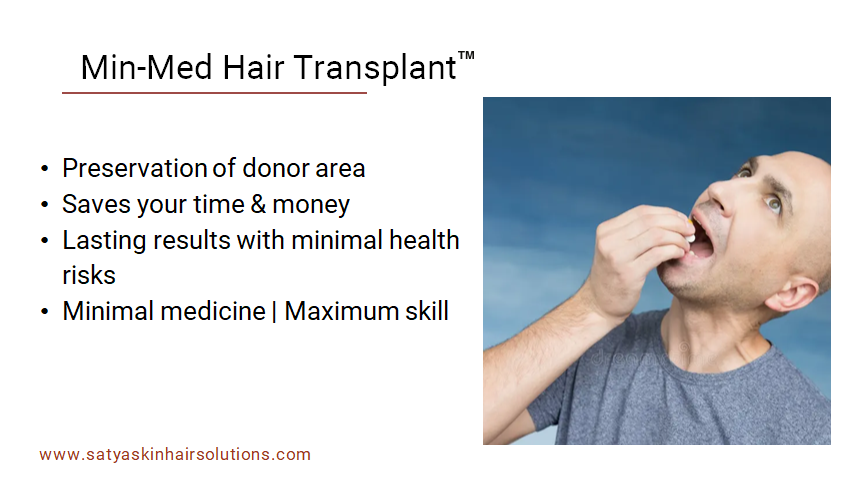
A Word of Wisdom from Dr. Shaiil Gupta, MD
“The truth is, hair restoration is not about shortcuts or instant glorification. It’s about skill, honesty, and long-term planning. At Satya, we empower our patients with knowledge, helping them make informed decisions for results that are both natural and lasting.”
Conclusion
Celebrity endorsements may look impressive, but they often hide the reality of failed planning and unsustainable results. By choosing an ethical approach and prioritizing your health, you can achieve a hair transplant that truly stands the test of time.
🔗 KNOW YOUR CUSTOMIZED GRAFTS & MEDICINE DOSAGE
Choose natural, long-lasting results with minimal health risks. Contact Satya today for a consultation.
Look good for sometime vs lifetime

Know the secrets of long lasting results
Read Some of our important Blogs

Why Choose Satya?
20+ Years of Expertise: Leaders in dermatology and hair restoration.
Globally Accredited: Recognized by the American Academy of Aesthetic Medicine.
Personalized Care: Advanced treatments tailored to you.
State-of-the-Art Facilities: Cutting-edge technology for superior results.
Corrective Specialists: Fixing unsatisfactory treatments.
265,000+ Happy Patients: Trusted globally for excellence.
Comprehensive Care: Skin and hair solutions under one roof.
Ethical & Transparent: Your well-being comes first.
What Our Patients Are Saying






Frequently Asked Questions
Medications such as minoxidil and finasteride can enhance the results of hair transplants by raising hair density and stopping hair loss. On the other hand, depending too much on strong drugs can cause tolerance and possibly health hazards.
Many times, celebrity hair transplants fail because of over-reliance on drugs, unethical behavior, inadequate donor area use planning, and unsustainable hairline designs.
Search for clinics emphasizing open policies, low pharmaceutical dependency, and preservation of donor areas. Steer clear of those mostly depending on endorsements or temporary successes.
As hair loss advances, overuse of the donor’s hair might result in inadequate coverage, obvious scars, and limited choices for the next transplants.
After a transplant, PRP—Platelet-Rich Plasma—treatment is usually not required. One session might be helpful, but several sessions have little effect and could cause scalp pain or tolerance.
Often prescribed to keep early outcomes are lifetime drugs. To prevent reliance and health hazards, ethical clinics such as Satya, on low, efficient pharmaceutical use, instead concentrate on
Corrective transplants can indeed rectify problems including unnatural outcomes, overharvested donor sites, and inadequate hairline design. Still, it relies on the surgeon’s ability and the residual quality of the donor hair.
In hair transplants, micro-dosing reduces the hazards connected with high-dose drugs while preserving hair growth. It provides a sensible approach for long-term health and environmentally friendly outcomes.
Maintaining the donor area ensures that, where necessary, subsequent transplants can be carried out—particularly as hair loss advances with age.
Many times, clinics include the cost of PRP in the total transplant package. Although they might be employed as marketing strategies, these “free” sessions hardly contribute to the end outcome.
Take Our Quick
Hair Loss Quiz
Find out the best treatment for your
hair loss today


